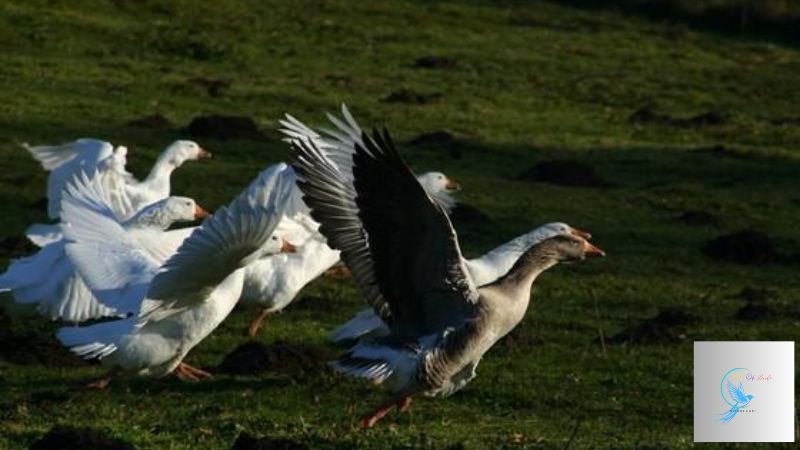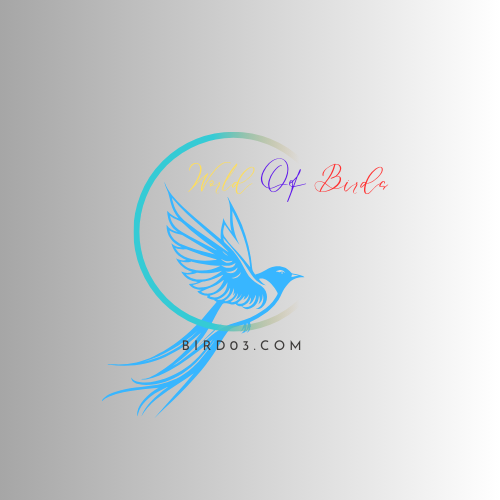Goose Down is one of the most coveted materials in the textile and bedding industries, prized for its exceptional insulation properties, softness, and lightweight. It is widely used in high-quality products like jackets, comforters, pillows, and sleeping bags, offering warmth without bulk. However, the process by which goose down is harvested and its ethical implications are topics of concern and interest for many consumers. Understanding how goose down is collected and the standards in place to ensure humane practices can help inform decisions about the products we purchase. So how goose down is harvested? Let’s find out with World Of Birds.
What is Goose Down?
Goose down is the soft, fluffy layer of fine feathers located underneath the tougher outer feathers of a goose. Unlike regular feathers, down clusters are three-dimensional, composed of tiny, interconnected fibers that trap air and create pockets of insulation. This makes down an incredibly efficient material for maintaining warmth. It is lightweight, compressible, and durable, which is why it is used in products designed to provide heat retention without excessive weight.
There are various types of down based on the bird species from which they are collected, such as duck down and goose down. Goose down, especially from larger species like the Hungarian goose or the Eider goose, is considered superior due to the larger size of the down clusters, which provides better insulation and loft.
How Goose Down is Harvested
The process of harvesting goose down can be carried out in several ways, some of which are more humane than others. These methods include:
Post-Mortem Harvesting (Plucking After Slaughter)
One of the most common and widely accepted methods of harvesting goose down is collecting it after the geese have been slaughtered for meat. The down and feathers are removed as part of the processing of the animal for consumption, which means that no additional harm is done specifically for the collection of down. This method is often regarded as more ethical compared to live plucking because the down is a byproduct of the meat industry.
Live-Plucking
Live-plucking, a practice that has been highly controversial and condemned by many animal welfare organizations, involves removing the down from live geese. This process is painful and traumatic for the birds, as it involves pulling the feathers from their skin, causing injuries, bleeding, and distress. Live-plucking can be done multiple times during the goose’s life, usually every six to seven weeks as the feathers regrow. This method has been banned in many countries, but there are still some regions where it occurs, particularly in parts of Eastern Europe and Asia.
Moulting Collection (Gathering Naturally Shed Feathers)
A more humane method of down collection is gathering feathers during the natural molting process of geese. During molting, birds naturally shed old feathers and grow new ones, meaning that the down can be collected without causing any harm. Farmers or harvesters simply pick up the loose feathers, which are either left in the goose’s environment or lightly gathered by hand. While this method is time-consuming and produces less down compared to other methods, it is considered the most ethical and sustainable way to harvest goose down. Molting collection is promoted in some regions and by some down producers who follow stricter animal welfare standards.
Ethical Concerns and Industry Standards
The controversy surrounding goose-down harvesting largely centers on the practice of live-plucking and the treatment of birds. The sight of geese being restrained while their feathers are painfully removed has sparked outrage among animal rights activists and concerned consumers alike. As awareness of these practices has grown, there has been an increasing demand for transparency and ethical standards in the down industry.
In response, various certifications and standards have been developed to ensure that the down used in products is sourced responsibly and humanely. Some of the most notable ethical certifications include:
Responsible Down Standard (RDS)
The Responsible Down Standard (RDS) is one of the most widely recognized certifications for ethically sourced down. It ensures that down and feathers are not collected from live-plucked or force-fed birds. Independent auditors inspect farms to ensure compliance with RDS requirements, and products that meet these standards are labeled accordingly. This certification guarantees that the down is a byproduct of the food industry and that the birds were treated humanely throughout their lives.
Global Traceable Down Standard (Global TDS)
Similar to RDS, the Global Traceable Down Standard requires that down be sourced ethically, with transparency at every step of the supply chain. It ensures that the down is not from live-plucked or force-fed geese and that the animals are treated in accordance with high welfare standards. The Global TDS allows consumers to trace the origin of the down in their products, ensuring accountability.

Downpass
Downpass is another certification that focuses on the ethical sourcing of down and feathers. Like the RDS and Global TDS, it prohibits live-plucking and force-feeding. In addition, it includes a tracking system for down products, so consumers can verify the origin of the materials used.
Alternatives to Goose Down
As concerns about animal welfare in the down industry have grown, so too has interest in alternatives to goose down. Some popular alternatives include:
Synthetic Insulation
Modern synthetic insulation materials, such as PrimaLoft and Thinsulate, have been designed to mimic the warmth, loft, and lightweight of natural down without using animal products. These synthetic fibers are water-resistant, retain heat even when wet, and are hypoallergenic, making them a suitable option for people looking to avoid animal-based materials.
Plant-Based and Sustainable Fillings
Innovative plant-based insulation materials, such as Kapok and Tencel, are becoming more common. These materials are derived from renewable sources like plant fibers and provide an environmentally friendly alternative to both down and synthetic insulation. While they may not offer the exact same performance as high-quality goose-down, they are effective for many uses.
Recycled Down
Some manufacturers are turning to recycled down, which involves cleaning and processing previously used down and feathers to create new products. This helps reduce waste and offers a more sustainable option for consumers who still want the benefits of down without contributing to new down harvesting.
Conclusion
Goosedown remains one of the most effective materials for insulation, offering superior warmth and comfort in a variety of products. However, the ethical concerns surrounding its harvesting process, particularly the practice of live-plucking, have led to increased scrutiny of the industry. Consumers are now more conscious of where their products come from, and the demand for ethically sourced down has prompted the development of certifications such as the Responsible Down Standard and the Global Traceable Down Standard.
For those who prioritize animal welfare, alternatives to traditional down, such as synthetic insulation or plant-based fillings, offer compelling options. As the industry continues to evolve, the focus on humane treatment and sustainability will likely become even more central, ensuring that the beauty of goose down does not come at the cost of animal suffering. By choosing ethically certified products or alternatives, consumers can make informed choices that align with their values.





